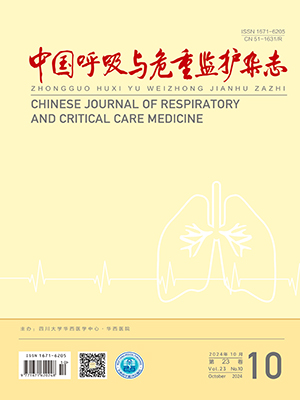Objective To observe the decline ratio of FEV1 after inhaling 0. 9% saline to the baseline, and to explore its relation to the result of bronchial provocation test ( BPT) with methacholine.Methods 115 patients with chronic cough or chest tightness were collected in Shougang Hospital, Peking University from March 2008 to September 2009. They were all performed pulmonary function test and the decline ratio of FEV1 after inhaling 0.9% saline to the baseline( ΔFEV1 ) was measured. Then they were all
performed BPT with methacholine. The predictive value of ΔFEV1 measurement for BPT results was evaluated. Results 49 cases yielded positive results in methacholine BPT, with ΔFEV1 gt; 3% in 35 cases and gt;5% in 20 cases. 66 casess yielded negative results in methacholine BPT, with ΔFEV1 gt; 3% in 6 cases. The sensitivity and specificity were 71% and 91% respectively when ΔFEV1 gt;3% was set as a cutoff,and which were 40. 8% and 100% respectively when ΔFEV1 gt;5% was set as a cut-off. All the patients didn’t show any serious adverse reaction. Conclusion ΔFEV1 gt;3% after inhaling 0. 9% saline is a good predictor for BPT results. More caution should be paid to these patients when performing BPT.
Citation: ZHANG Erming,ZHAO Chunyan,XIANG Pingchao. Decline Ratio of FEV1 after Inhaling Normal Saline as a Predictor of Bronchial Provocation Test. Chinese Journal of Respiratory and Critical Care Medicine, 2010, 9(3): 256-258. doi: Copy




